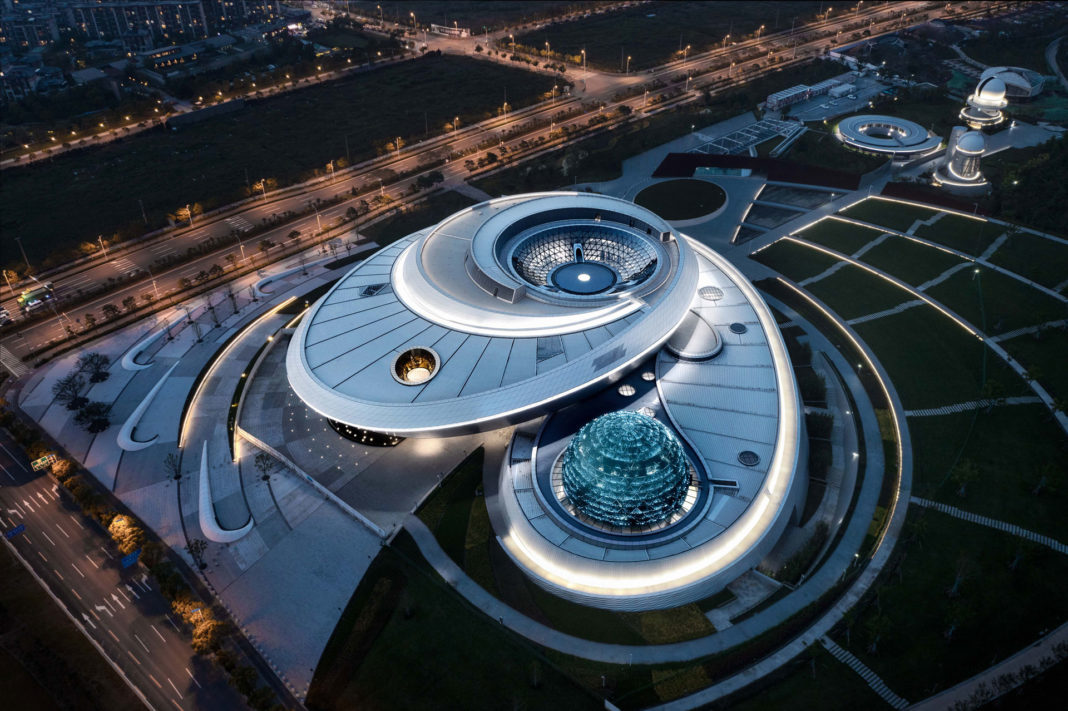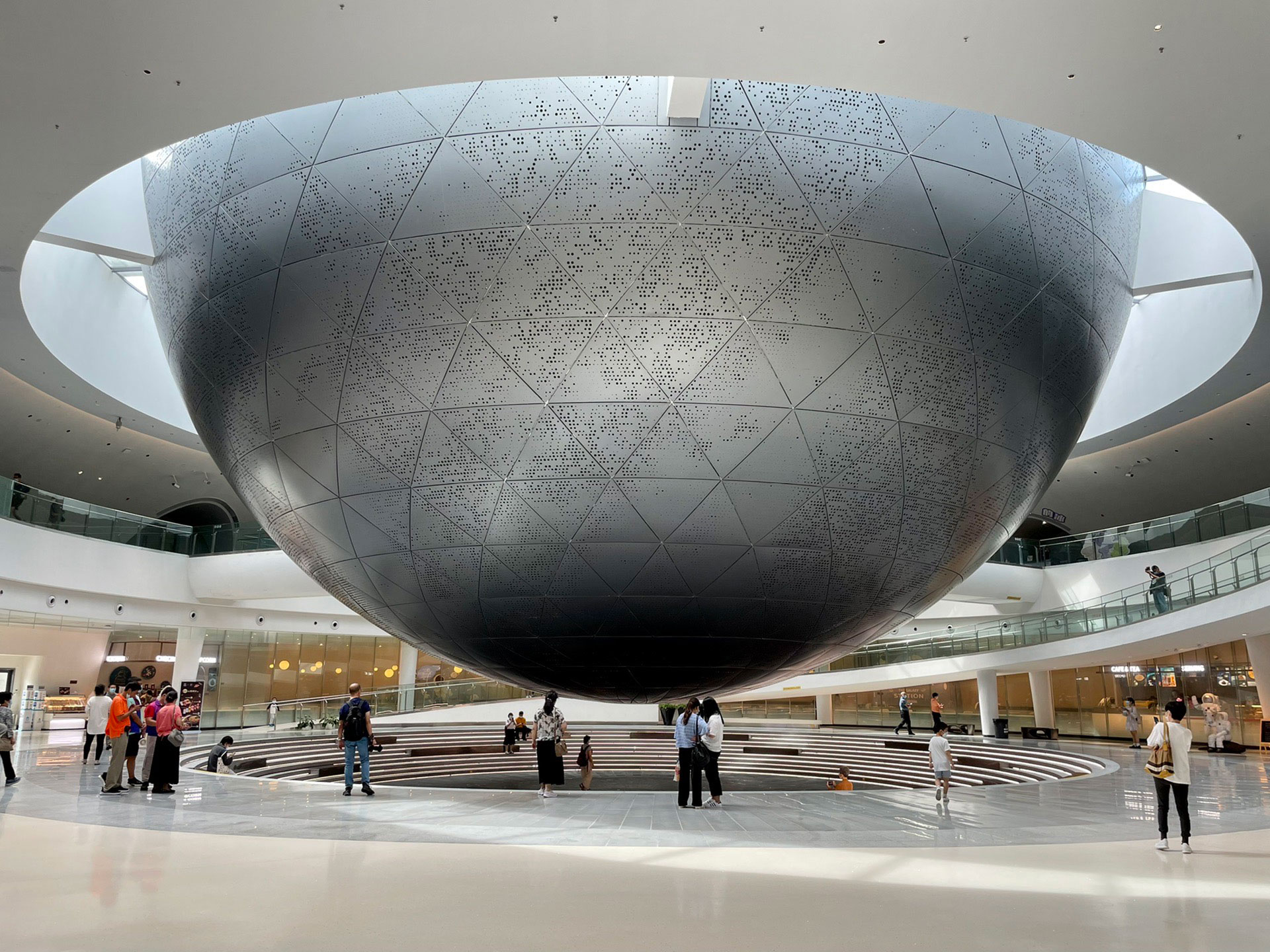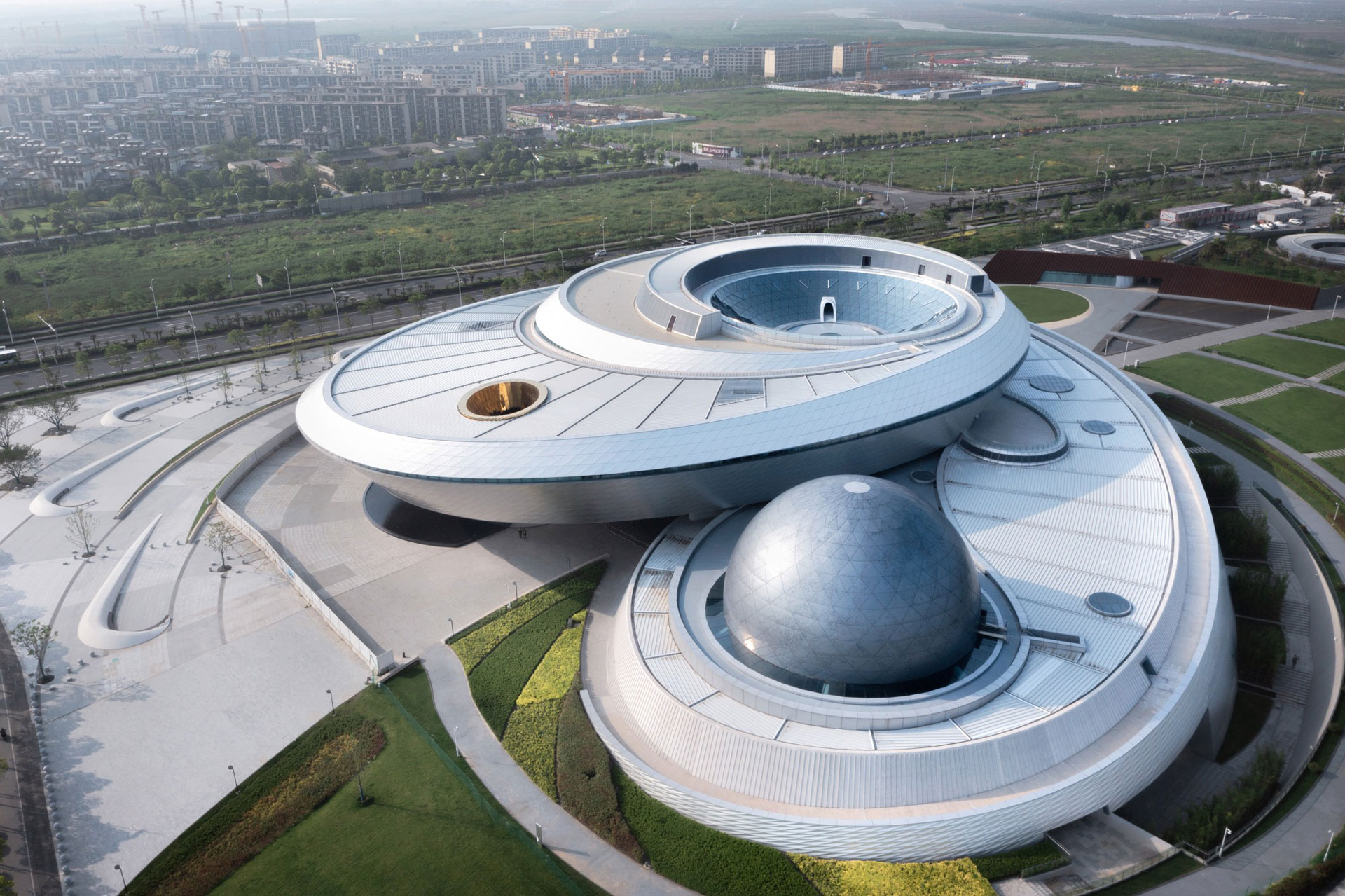Spanish designer at Ennead Architects is behind the Shanghai Astronomy Museum which showcases the wonders of the universe in 58,600 m2 of exhibition space
The Shanghai Astronomy Museum is an enormous planetarium which opened to the public in 2021 in Lingang New City. International firm Ennead Architects won the bid and design partner Thomas J. Wong, together with Sevillian architect Margarita Calero, came up with the museum’s spectacular design, featuring elliptical silvery arches and winding architectural ribbons that echo the paths traced by celestial bodies in the sky.
Without a single line or right angle, the building is inspired by the geometry of the universe and the dynamic energy of celestial movement as it invokes the experience of orbital motion. It occupies a total area of 58,600 m2 and its dome covers 38,000 m2, making it the world’s largest museum of its kind.
Not only is it spectacular to look at, but it is also functional. The planetarium is divided into three main sections with the Oculus, in the entrance hall, the Sphere, half-submerged inside the building and the Inverted Dome which sits on top of the central atrium. Each form is a functioning astronomical instrument, allowing visitors to follow the passage of time, track the sun, moon and stars and observe the sky in new and unexpected ways.
One of the museum’s main design concepts is to convey the relationship between the Earth and the Sun as well as the orbital motion of our planet and the intricate choreographies resulting from the gravitational pull of bodies within the Milky Way.
The museum boasts more than one hundred and twenty collections of artefacts as well as original pieces that once belonged to scholars and scientists such as Galileo, Isaac Newton, ancestral Chinese astronomers as well as exhibits of China’s modern ambitious space exploration program. Objects on display also include samples of moon rock and soil and a solar telescope adapted for educational use.
A visit to the museum culminates in the Inverted Dome designed so it cuts off the horizon to allow for unfettered views of the sky. The 720º spiral ramp inside the museum and beneath the inverted dome traces the orbital flow of visitors and launches their eye upward to its apex.





